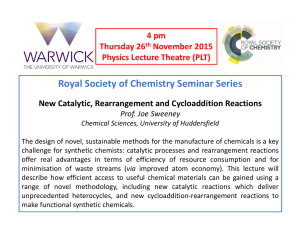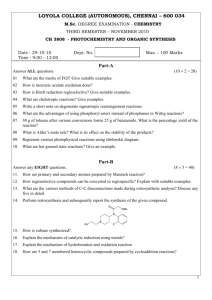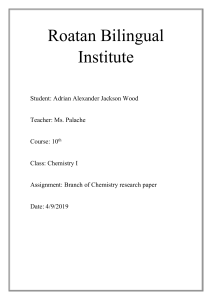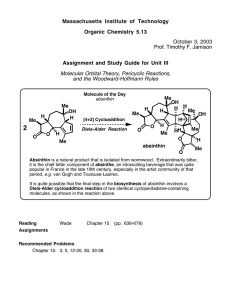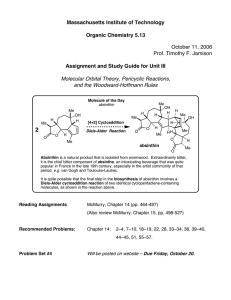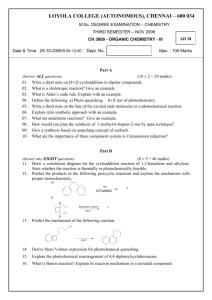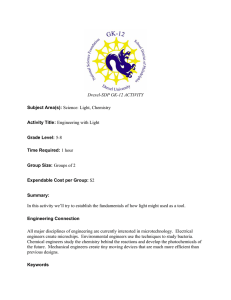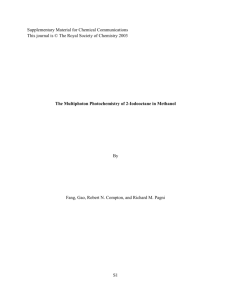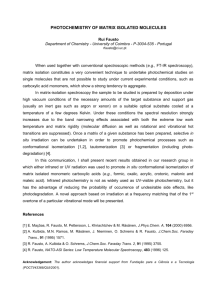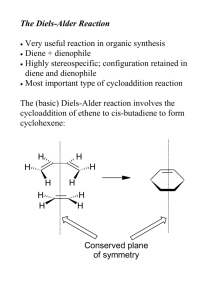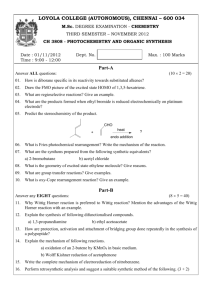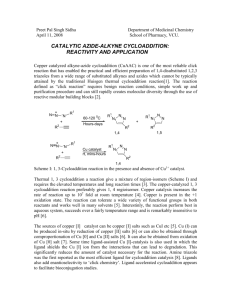CH 3808 - Loyola College
advertisement
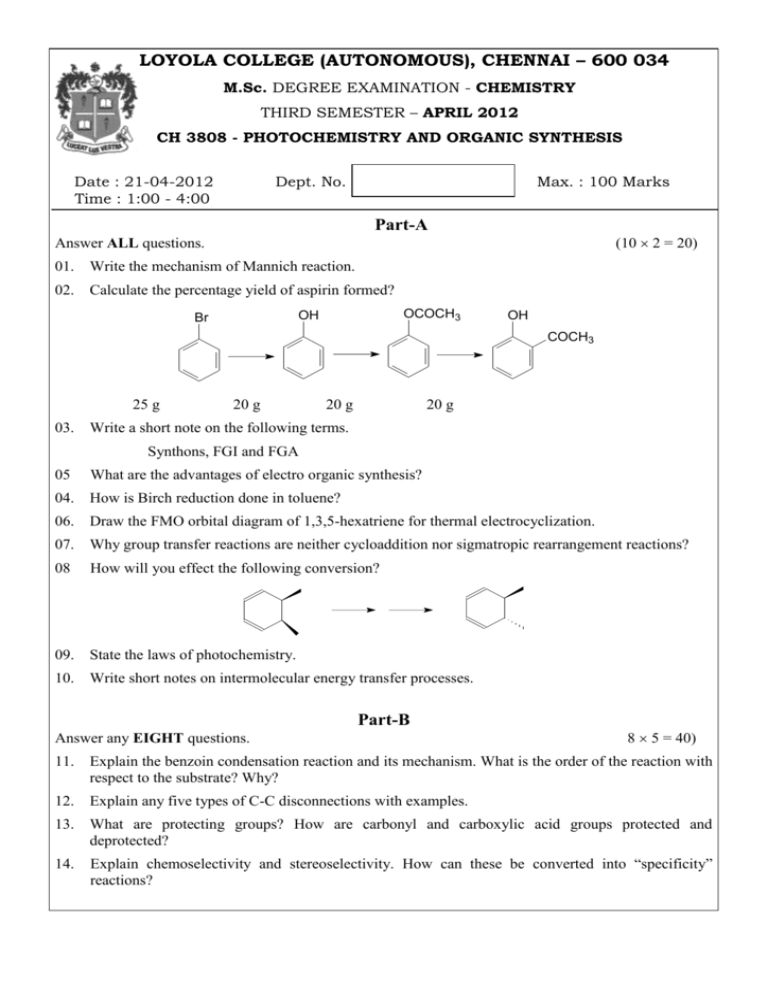
LOYOLA COLLEGE (AUTONOMOUS), CHENNAI – 600 034 M.Sc. DEGREE EXAMINATION - CHEMISTRY THIRD SEMESTER – APRIL 2012 CH 3808 - PHOTOCHEMISTRY AND ORGANIC SYNTHESIS Date : 21-04-2012 Time : 1:00 - 4:00 Dept. No. Max. : 100 Marks Part-A (10 2 = 20) Answer ALL questions. 01. Write the mechanism of Mannich reaction. 02. Calculate the percentage yield of aspirin formed? OCOCH3 OH Br OH COCH3 25 g 03. 25 g 20 g 20 g 20 g 20 g Write a short note on the following terms. Synthons, FGI and FGA 05 What are the advantages of electro organic synthesis? 04. How is Birch reduction done in toluene? 06. Draw the FMO orbital diagram of 1,3,5-hexatriene for thermal electrocyclization. 07. Why group transfer reactions are neither cycloaddition nor sigmatropic rearrangement reactions? 08 How will you effect the following conversion? 09. State the laws of photochemistry. 10. Write short notes on intermolecular energy transfer processes. Part-B Answer any EIGHT questions. 8 5 = 40) 11. Explain the benzoin condensation reaction and its mechanism. What is the order of the reaction with respect to the substrate? Why? 12. Explain any five types of C-C disconnections with examples. 13. What are protecting groups? How are carbonyl and carboxylic acid groups protected and deprotected? 14. Explain chemoselectivity and stereoselectivity. How can these be converted into “specificity” reactions? 15. Compare the nature of reduction reactions of LiAlH4 with that of NaBH4? (2 x 2½) 16. How catalytic hydrogenation can control stereochemistry in alkynes? Explain with any two examples. 17. Compare the KMnO4 oxidations in acidic, basic and neutral conditions. 18. Draw the correlation diagram for the electrocyclization of 1,3-butadiene for disrotation. 19 a) State Woodward Hofmann rules for electrocyclization and cycloaddition reaction. b) Identify the possible products in the following reaction. hv + 20. ? Predict the products in the following reactions and explain the mechanism. O 3-methyl-2-hexene CH2=C=CH2 ? 21. 22. hv hv ? Write a short note on various photochemical processes taking place in the excited state. Write the mechanism of photochemical rearrangement of 4,4-diphenyl-2-cyclohexenone. Part-C (4 10 = 40) Answer any FOUR questions. 23. Write a short note on the following. (4 + 3 + 3) a) Stobbe reaction b) Wittig reaction c) Darzen’s reaction 24. Perform retrosynthesis and subsequently synthesize the given compounds. (5 + 5) O b) a) Ph 25. O N H NMe2 Br a) Define Natural reactivity and Umpolung concept with examples. What is the importance of these concepts? (4) b) Explain the mechanism of Knoevenagal and Reformatsky reactions. (6) 26. a) Write the mechanism of following reaction (4). + O + AlCl3 OMe 25 oC, 48 h 70% COOMe + AlCl3 b) Write the correlation diagram for the cycloaddition reaction of two ethylene molecules. State whether the reaction is thermally or photochemically feasible. (6) 27. a) How is norethisterone synthesized? (6) b) Explain regioselectivity in cycloaddition reactions with examples. (4) 28. a) Explain the photoreduction of benzophenone using i) diphenylmethanol and (6) ii) 2-propanol. b) Write a short note on the photochemistry of ,-unsaturated ketones. Give an example. (4) *******
